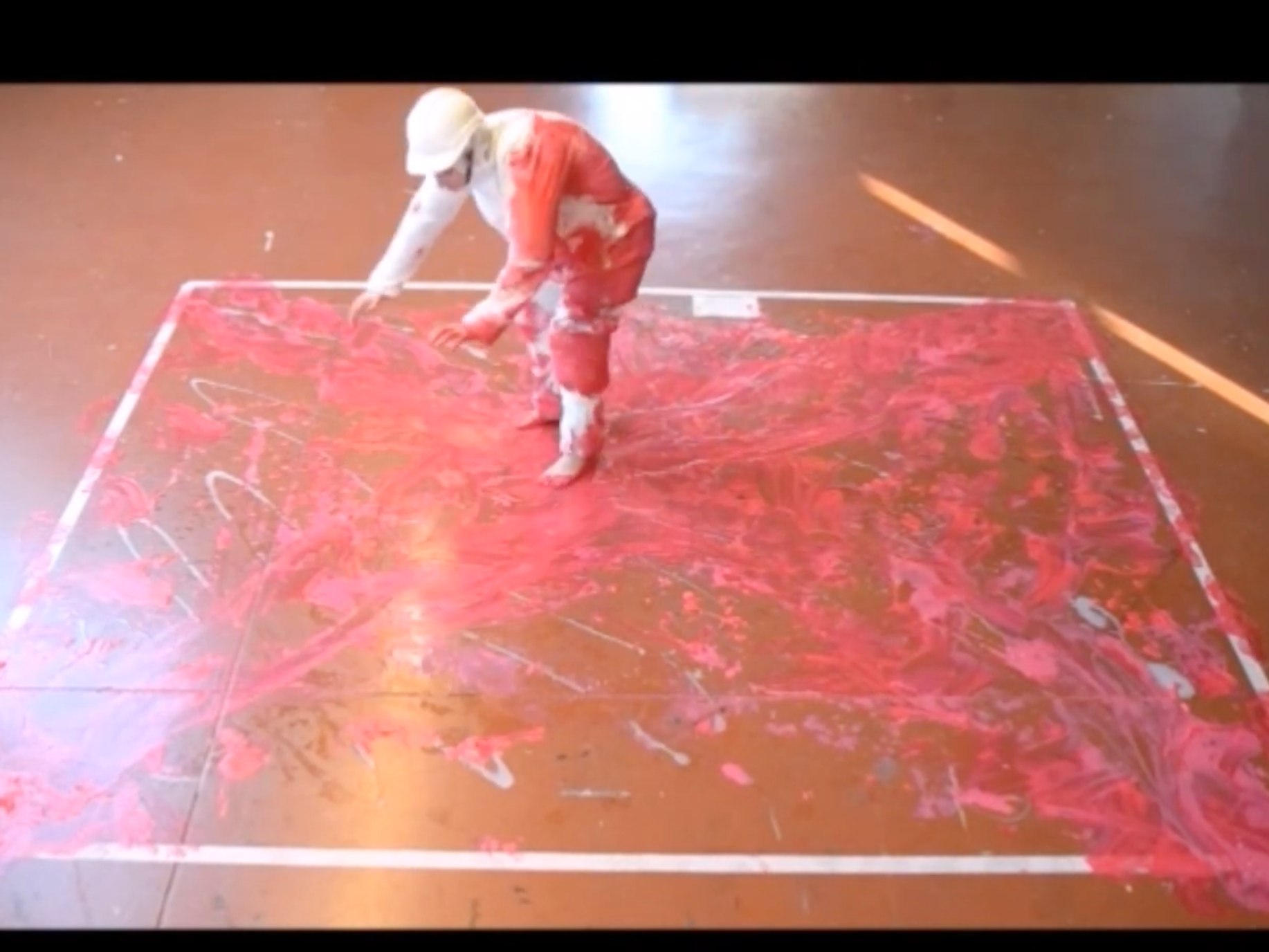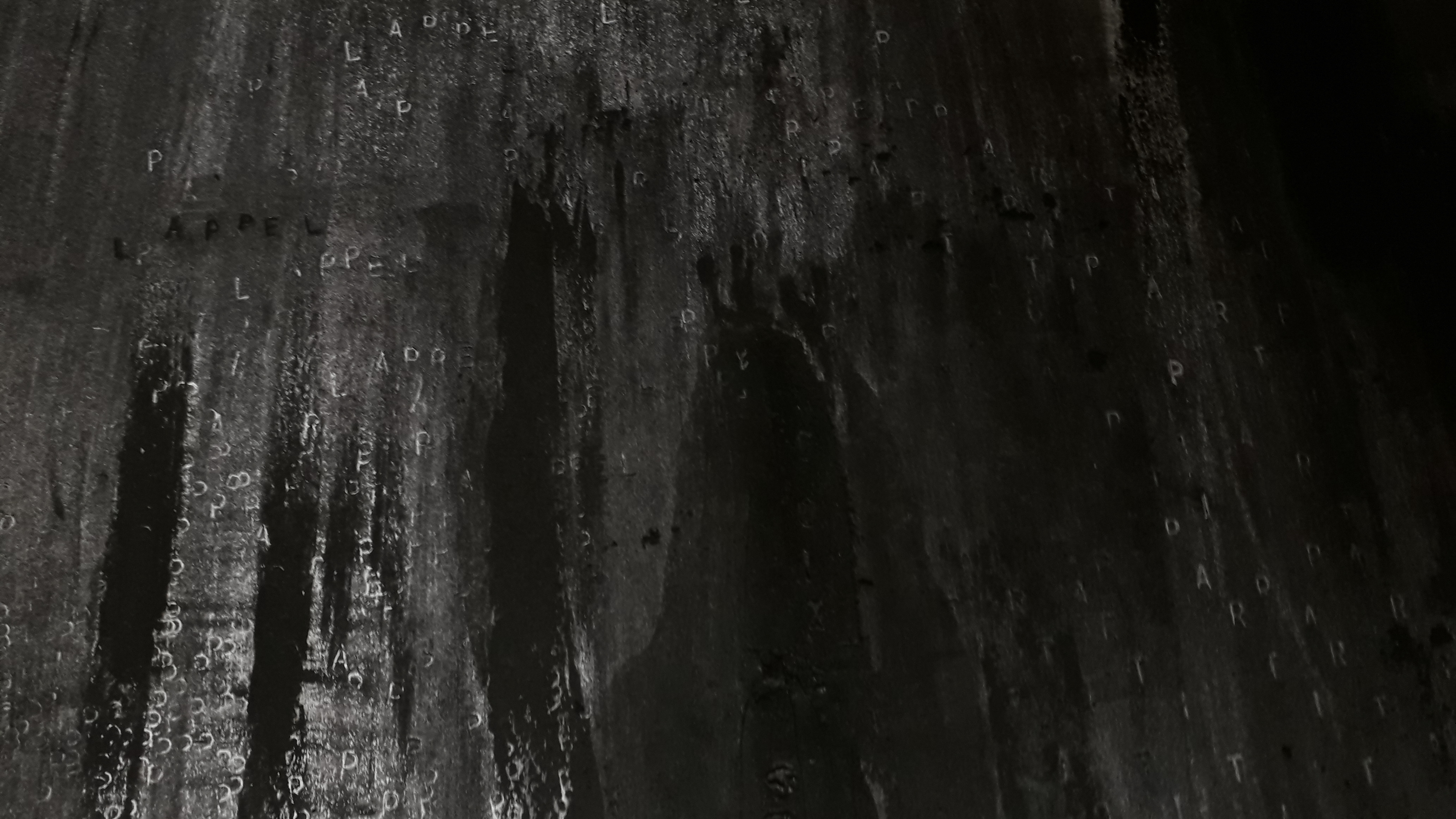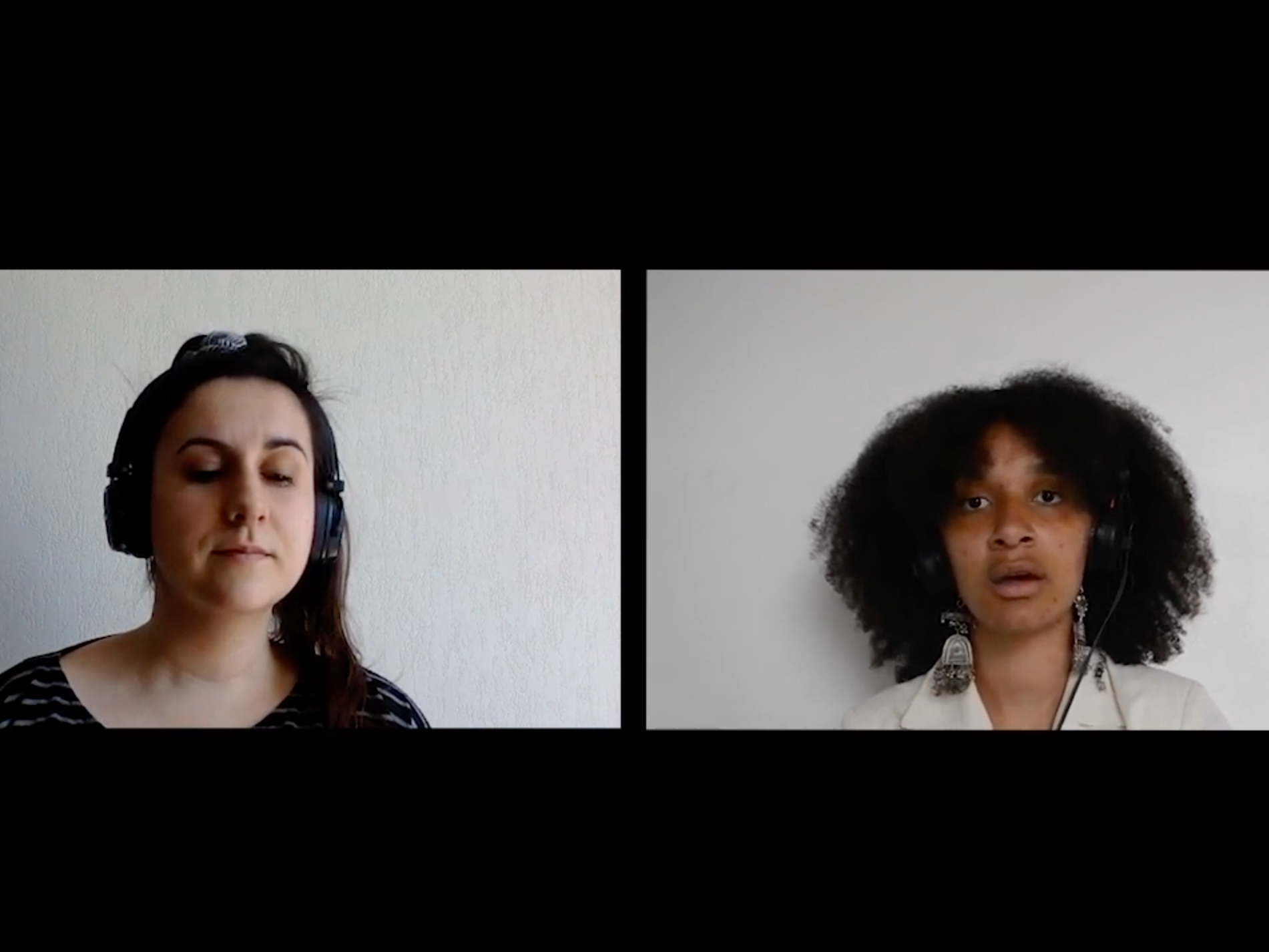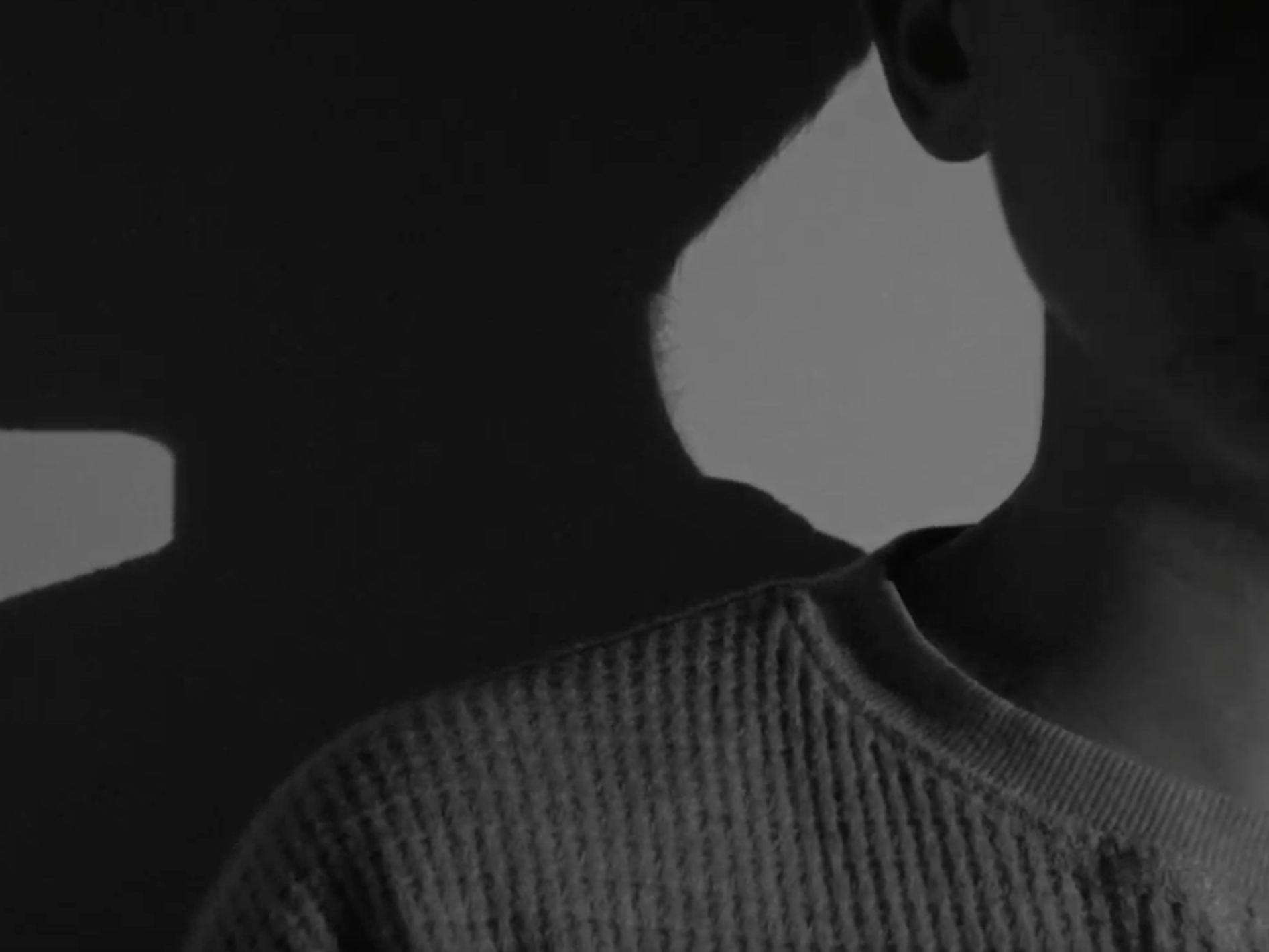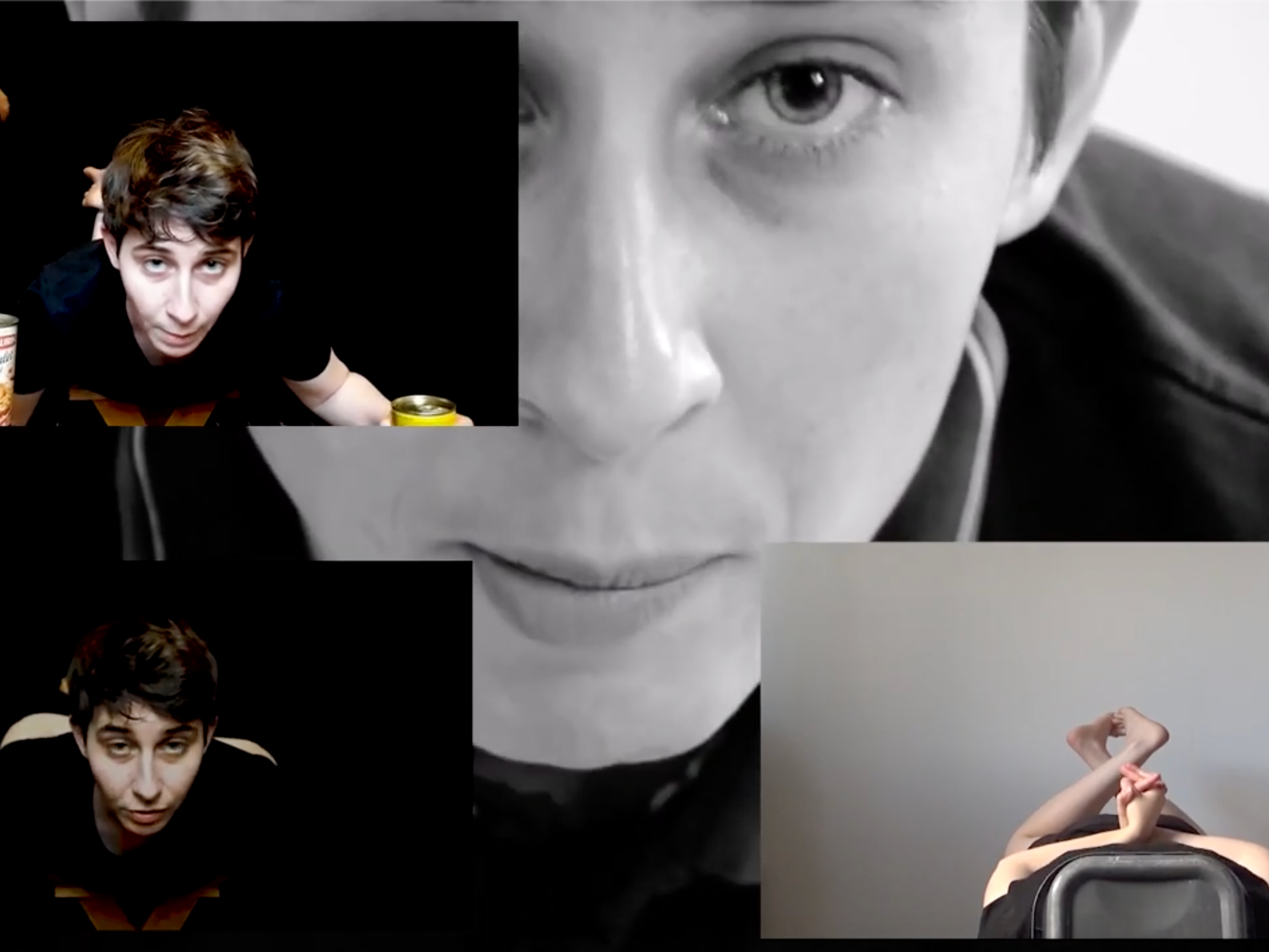(V1)
© Armonie Guillaume
© Armonie Guillaume
L’appel ( v1), novembre 2019
─
Installation sonore, 10’02'', accompagnée de ses partitions, feuilles blanches et transparentes, encre noir et épingles sans têtes,
Installation sonore, 10’02'', accompagnée de ses partitions, feuilles blanches et transparentes, encre noir et épingles sans têtes,
29,7 x 21 cm.
Cette version 1 appelée « L’appel » est une immersion sonore se situant à la frontière d’un chant rituel et d’une poésie sonore et s’intéresse aux origines du carnaval de Rio. Il faut savoir que le carnaval a pour racine les traditions européennes : l’entrudo qui est un rituel de purification avant le Carême. Les mots du chant se sont inspirés d’un chant populaire brésilien qui est chanté au carnaval, Herois da Libertade écrit en 1969 par Roberto Ribeiro. « L’appel » s'en inspire pour développer une oeuvre entrant en résonance avec ce chant.
Cette œuvre est composée de mots répétés afin de créer des cellules rythmiques comme dans une partition de musique. Des voix s'entremêlent et s'entrechoquent grâce à un mixage de voix de l'artiste, Armonie Guillaume, préalablement enregistré. La répétition est une technique de composition que l’on retrouve également dans les rituels africains pour transmettre le chant par l’oralité. L’utilisation de la répétition dans cette pièce sonore est un moyen de revenir aux sources des rituels ancestraux, c'est-à-dire, du terrestre vers le céleste.
(English)
The Call, November 2019
Sound installation, 10'02'', accompanied by its scores, white and transparent sheets, black ink and headless pins,
29.7 x 21 cm.
Sound installation, 10'02'', accompanied by its scores, white and transparent sheets, black ink and headless pins,
29.7 x 21 cm.
This version 1 called “The Call” is a sound immersion located on the edge between a ritual song and a sound poetry and focusing on the origins of the Rio carnival. You should know that carnival has its roots in European traditions: the entrudo which is a purification ritual before Lent. The words of the song were inspired by a popular Brazilian song that is sung at carnival, Herois da Libertade written in 1969 by Roberto Ribeiro. “The Call” is inspired by this to develop a work that resonates with this song.
This version 1 called “The Call” is a sound immersion located on the edge between a ritual song and a sound poetry and focusing on the origins of the Rio carnival. You should know that carnival has its roots in European traditions: the entrudo which is a purification ritual before Lent. The words of the song were inspired by a popular Brazilian song that is sung at carnival, Herois da Libertade written in 1969 by Roberto Ribeiro. “The Call” is inspired by this to develop a work that resonates with this song.
This work is composed of repeated words to create rhythmic cells like in a musical score. Voices intermingle and collide thanks to a previously recorded mix of voices by the artist, Armonie Guillaume. Repetition is a composition technique that is also found in African rituals to orally transmit songs. The use of repetition in this sound piece is a way of returning to the sources of ancestral rituals, in other words, from the earthly to the celestial.
(V2)
L'appel (v2), performance d’Armonie Guillaume, interprétée par Armonie Guillaume, Cloé Rimbert, Estelle Thoury (3 voix) et Fanny Valentin (percussions), 12 '.
2020, (Version enregistrement), performance polyphonique. ( en cours de création)
La version 2 de « L’appel » est une performance vocale à 3 voix qui est une continuité de son installation sonore. Elle s'inspire également de la samba enredo, Herois da Libertade de Roberto Ribeiro.
Ce chant populaire, Herois da Libertade, est souvent chanté pendant le carnaval. C’est un événement important pour les Brésiliens, car l'expression corporelle est convoquée par la samba où le chant est réitéré afin de les accompagner au cours du défilé. Ma performance « L’appel » s'inspire de ce rituel pour développer une oeuvre entrant en résonance avec la notion du carnaval.
« L’appel » s’en nourrit pour créer un rituel entre l’atmosphère festive que suscitent la samba et le rituel ancestral que l’on retrouve dans les racines brésiliennes. Cette oeuvre a été conçue comme un rituel purificateur et libérateur. Ici, la répétition est un processus dans la composition vocale qui crée une rythmique pour dévoiler un message d’espoir. Chaque interprète possède un masque attribué à son incarnation : le sifflet, la voix porteuse du message, les percussions et le souffle.
Une performance dans laquelle le ressenti et l’intensité des mots prononcés par les performeurs révèlent une poésie sonore de la langue pour créer cette lisière entre le rituel festif et purificateur. « L’appel », respire la samba brésilienne par le sifflet à trois tons que l’on retrouve au carnaval. Elle est également accompagnée par le rythme du djembé et des percussions corporelles qui réaniment les traditions africaines. On entend le souffle d’une voix qui rappelle le bruit du vent comme un appel à la nature et les « cris-souffles » qui sont un appel au terrestre et au céleste. La performance peut renvoyer aux « cri-rythmes » de François Dufrêne où la voix est travaillée à travers la spontanéité et la possibilité vocale. Progressivement, trois voix se rejoignent et se séparent au cours du morceau comme une rencontre pour enfin s’unir comme un son libérateur.
Cette performance questionne la construction des chants où la réitération est présentée comme un moyen de transmettre oralement les traditions ancestrales. Elle est également une construction obsessionnelle pour véhiculer un message. La performance appuie une importance sur l'écoute et sur le ressenti des performeurs car ils doivent s'orienter dans l'espace grâce à la voix des autres protagonistes. Il n'y a pas de possibilité de rencontre ou de se voir. C'est un travail sur l'écoute des performeurs pour déambuler. Le déplacement des interprètes prend forme comme un défilé où les temps de poses et d'activités font partie du rituel.
(English)
The Call (v2), performance by Armonie Guillaume, performed by Armonie Guillaume, Cloé Rimbert, Estelle Thoury (3 voices) and Fanny Valentin (percussion), 12'.
2020, (Recording version), polyphonic performance. (being created)
2020, (Recording version), polyphonic performance. (being created)
Version 2 of “The Call” is a vocal performance for 3 voices which is a continuation of her sound installation. It is also inspired by the samba enredo, Herois da Libertade by Roberto Ribeiro.
This popular song, Herois da Libertade, is often sung during Carnival. It is an important event for Brazilians, because bodily expression is summoned by the samba in which the song is reiterated to accompany them during the parade. My performance “The Call” is inspired by this ritual to develop a work that resonates with the notion of carnival.
“The Call” draws on it to create a ritual between the festive atmosphere that samba creates and the ancestral ritual that we find in Brazilian roots. This work was designed as a purifying and liberating ritual. Here, repetition is a process in vocal composition that creates rhythm to reveal a message of hope. Each performer has a mask attributed to their incarnation: the whistle, the voice carrying the message, the percussion and the breath.
A performance in which the feeling and the intensity of the words pronounced by the performers reveal a sound poetry of the language to create this border between the festive and purifying ritual. “The Call” breathes Brazilian samba through the three-tone whistle that we find during carnival. It is also accompanied by the rhythm of the djembe and body percussion which revive African traditions. We hear the breath of a voice which recalls the sound of the wind as a call to nature and the “breathing cries” which are a call to the earthly and the celestial. The performance can refer to the “cri-rhythms” of François Dufrêne in which the voice is worked through spontaneity and vocal possibility. Gradually, three voices come together and separate during the piece like an encounter to finally unite like a liberating sound.
This popular song, Herois da Libertade, is often sung during Carnival. It is an important event for Brazilians, because bodily expression is summoned by the samba in which the song is reiterated to accompany them during the parade. My performance “The Call” is inspired by this ritual to develop a work that resonates with the notion of carnival.
“The Call” draws on it to create a ritual between the festive atmosphere that samba creates and the ancestral ritual that we find in Brazilian roots. This work was designed as a purifying and liberating ritual. Here, repetition is a process in vocal composition that creates rhythm to reveal a message of hope. Each performer has a mask attributed to their incarnation: the whistle, the voice carrying the message, the percussion and the breath.
A performance in which the feeling and the intensity of the words pronounced by the performers reveal a sound poetry of the language to create this border between the festive and purifying ritual. “The Call” breathes Brazilian samba through the three-tone whistle that we find during carnival. It is also accompanied by the rhythm of the djembe and body percussion which revive African traditions. We hear the breath of a voice which recalls the sound of the wind as a call to nature and the “breathing cries” which are a call to the earthly and the celestial. The performance can refer to the “cri-rhythms” of François Dufrêne in which the voice is worked through spontaneity and vocal possibility. Gradually, three voices come together and separate during the piece like an encounter to finally unite like a liberating sound.
This performance questions the construction of songs where reiteration is presented as a means to orally transmit ancestral traditions. It is also an obsessive construction to convey a message. The performance places an emphasis on listening and feeling on the part of the performers because they have to orient themselves in space thanks to the voices of the other protagonists. There is no possibility of meeting or seeing each other. Performers have to work on listening as they wander around. The movement of the performers takes the form of a parade where the poses and activities are part of the ritual.
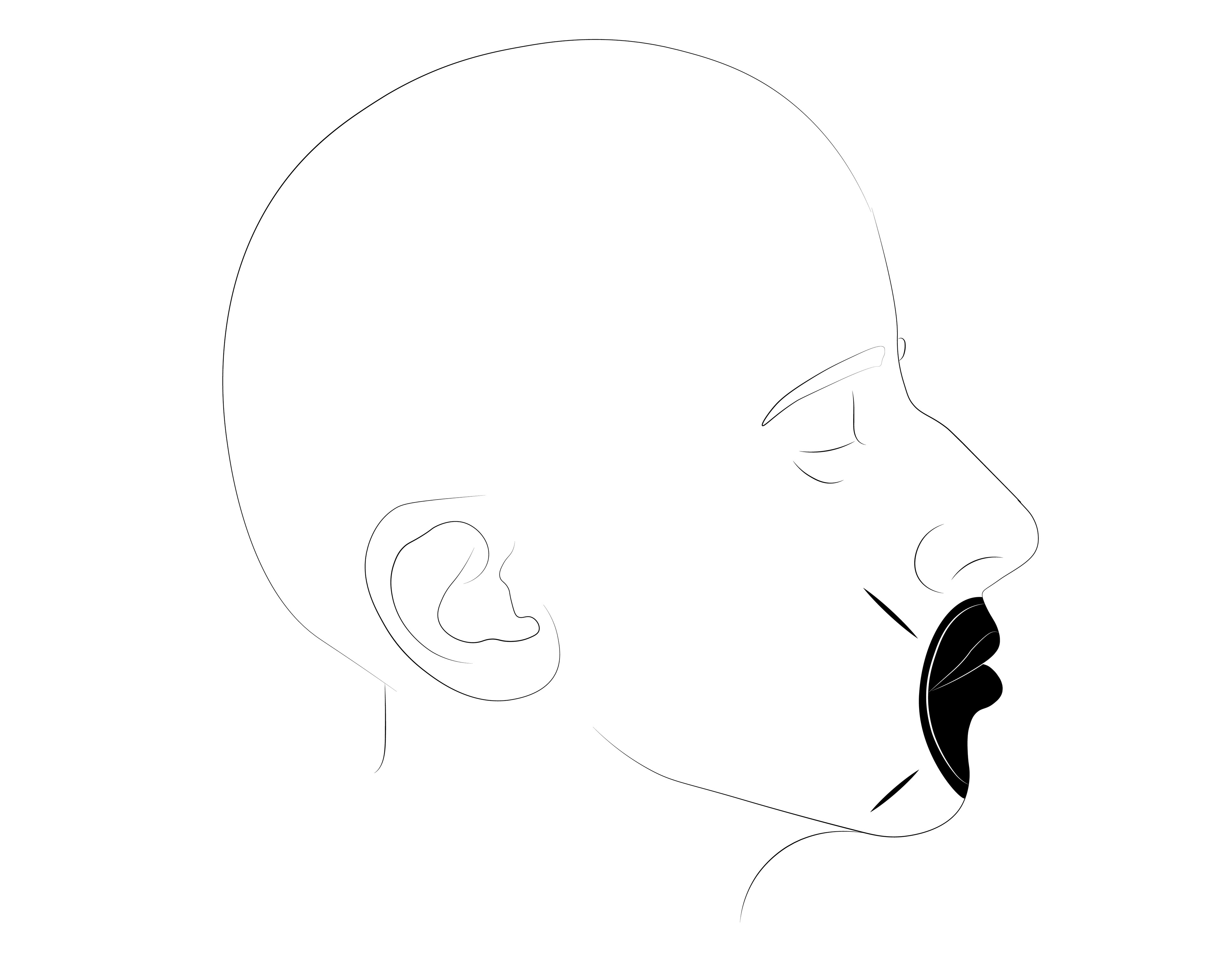
Collaboration Estelle Thoury et Armonie Guillaume

Collaboration Estelle Thoury et Armonie Guillaume

Collaboration Estelle Thoury et Armonie Guillaume
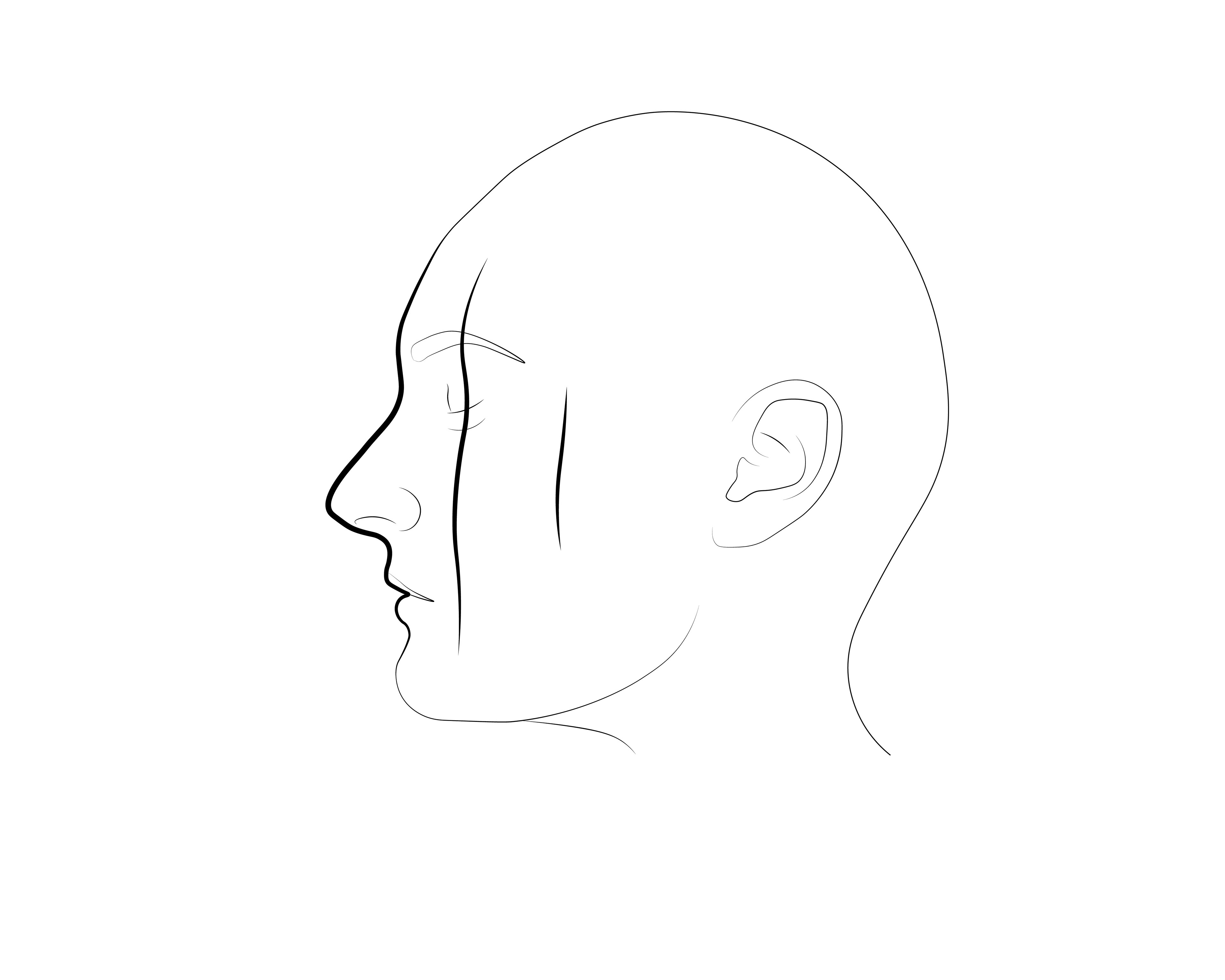
Collaboration Estelle Thoury et Armonie Guillaume
Croquis en collaboration avec Estelle Thoury à partir du profil des interprètes.
Partant du haut vers le bas : Voix 1 : la voix, Voix 2 : le sifflet, Voix 3 : le souffle et Voix 4, les percussions
Sketches in collaboration with Estelle Thoury based on the performers' profiles.
From top to bottom: Voice 1: the voice, Voice 2: the whistle, Voice 3: the breath and Voice 4, the percussion instruments.
From top to bottom: Voice 1: the voice, Voice 2: the whistle, Voice 3: the breath and Voice 4, the percussion instruments.
(V3)
L'appel (v3) pour 2 voix, septembre 2021, performance d'Armonie Guillaume accompagnée d'un djembé et interprétée par Maëlys Le Mouël et Armonie Guillaume
«L’appel » se réinvente sous différentes versions. Une troisième version, passant de trois à deux voix.
Celle-ci reprend une même lecture à un détail près. La version est conçue sous une autre scénographie dans laquelle la déambulation n'existe plus. Les performeurs sont dos à dos pour n'écouter que la parole de l'autre. La rencontre entre les deux performeurs se fait par l'écoute où la parole de l'un et de l'autre se complète. Un ping-pong vocal où la voix est le seul moyen de communication. Parfois, les voix se chevauchent, s'unissent ou se confrontent, mais toutes deux portent le même message dans ce rituel, la liberté et le renouveau.
The Call (v3) for 2 voices, September 2021, performance by Armonie Guillaume accompanied by a djembe and performed by Maëlys Le Mouël and Armonie Guillaume
“The Call” is reinvented in different versions. A third version, going from three to two voices.
This one follows the same approach than the previous versions except for one detail. This version is designed under another scenography in which wandering no longer exists. The performers are back to back in order to listen only to each other's words. The meeting between the two performers takes place through listening as the words of one and the other complement each other. A vocal ping-pong in which voice is the only means of communication. Sometimes the voices overlap, unite or confront each other, but both carry the same message in this ritual, freedom and renewal.
“The Call” is reinvented in different versions. A third version, going from three to two voices.
This one follows the same approach than the previous versions except for one detail. This version is designed under another scenography in which wandering no longer exists. The performers are back to back in order to listen only to each other's words. The meeting between the two performers takes place through listening as the words of one and the other complement each other. A vocal ping-pong in which voice is the only means of communication. Sometimes the voices overlap, unite or confront each other, but both carry the same message in this ritual, freedom and renewal.

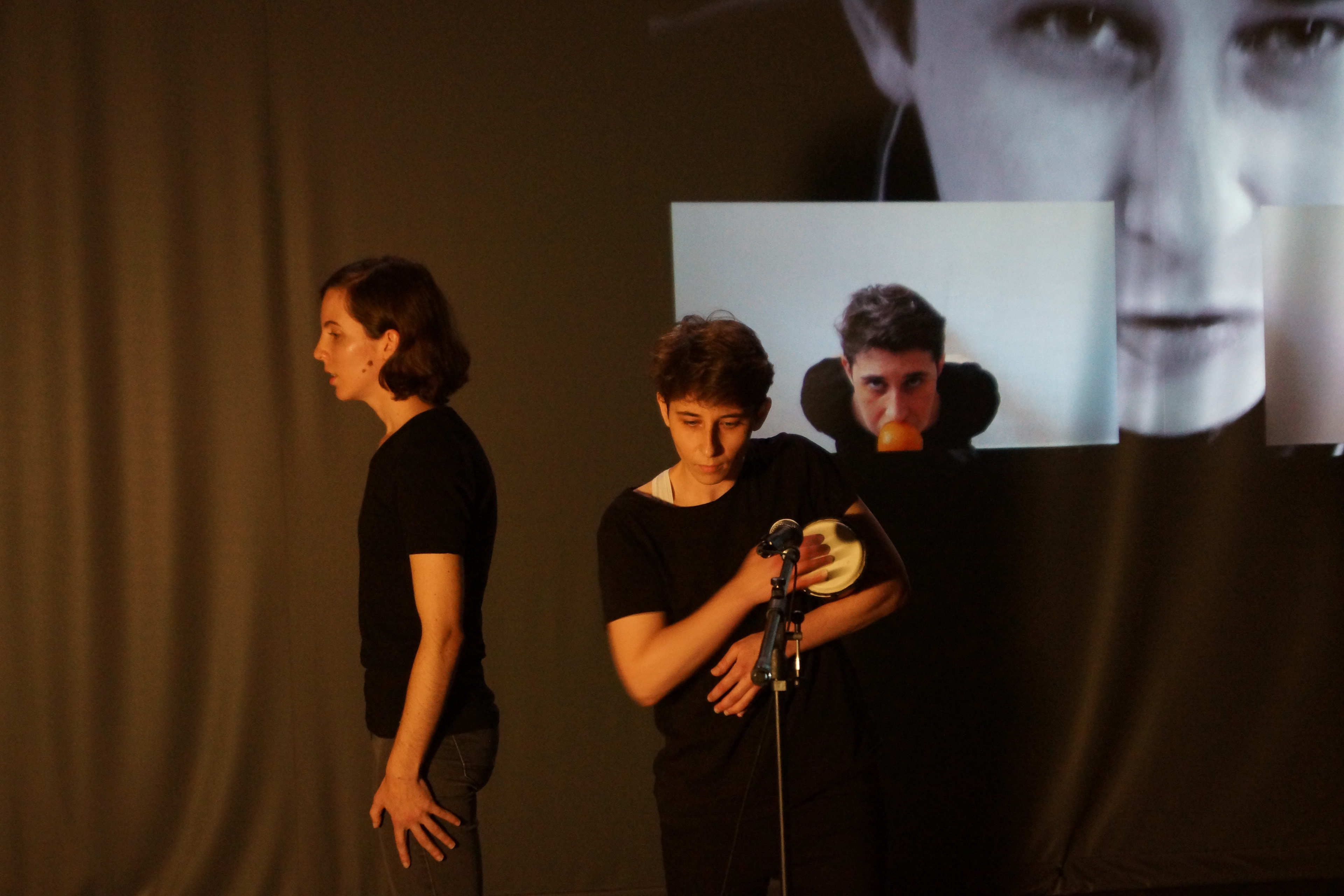
Projection vidéo, Remakes (Viva voz) et installation Confidence, au cours de l'exposition personnelle à l'UFR Des Arts, septembre 2021.
Photographe © Audrey Dauchy
Video projection, Remakes (Viva voz) and installation Confidence, during solo show at UFR Des Arts, September 2021.
Photographer © Audrey Dauchy
Photographer © Audrey Dauchy

